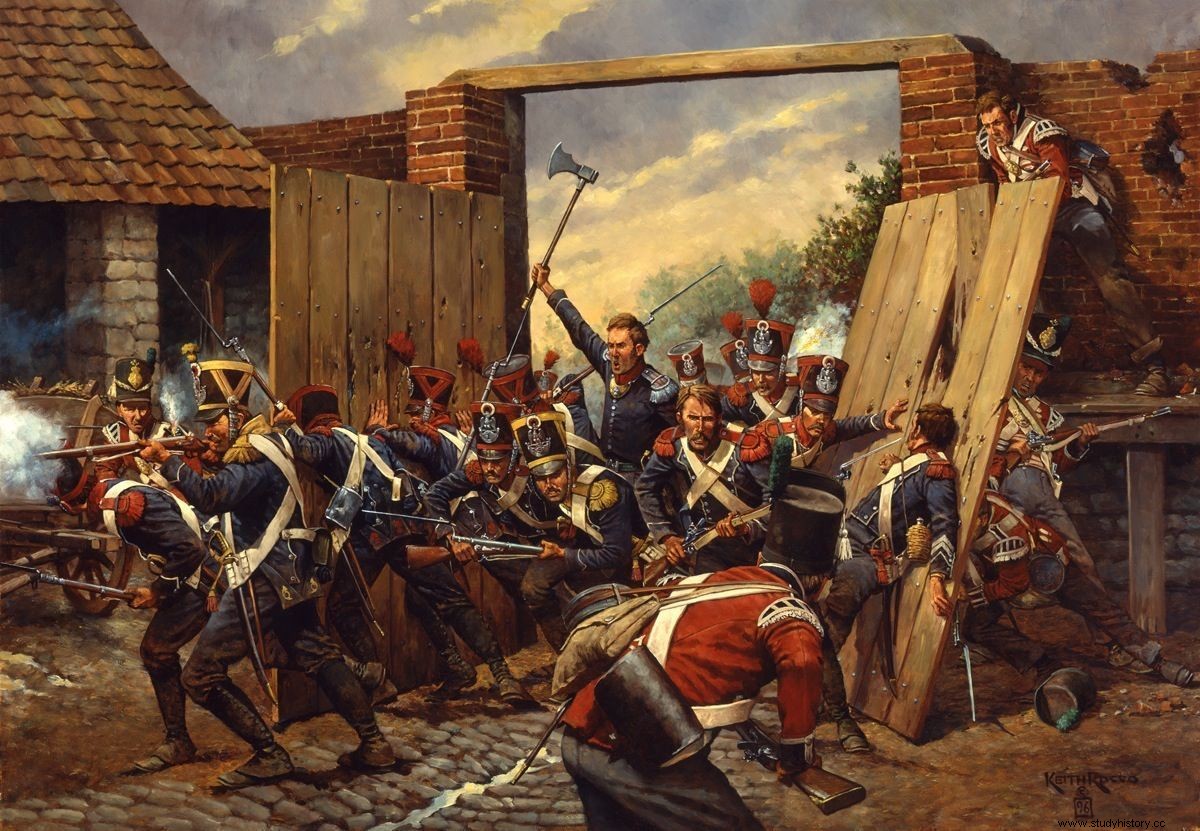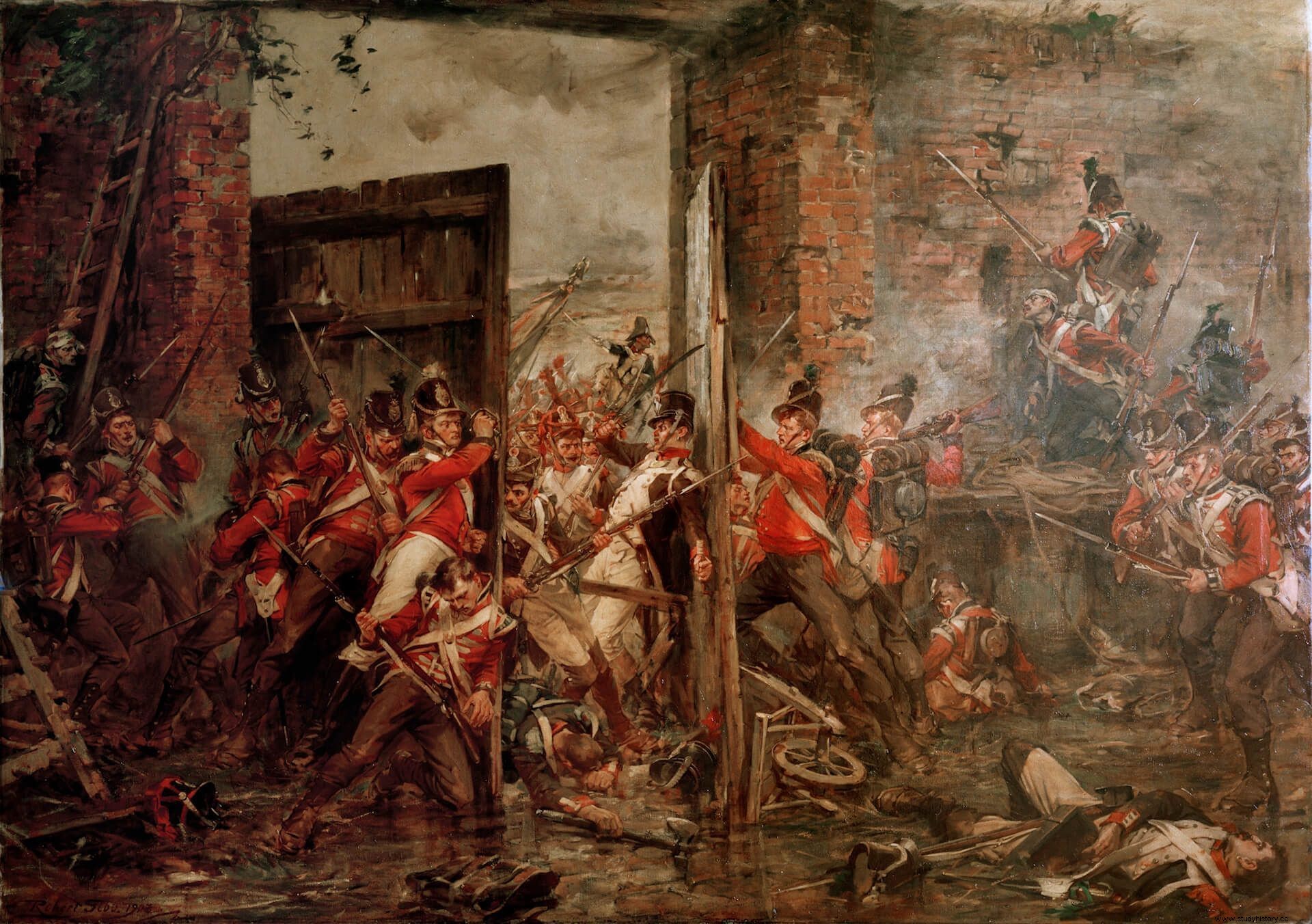
The château of Hougoumont
Although the Anglo-Allied Commander-in-Chief, who had had the opportunity to inspect the place long ago, was perfectly aware of the existence of the fortified farm, its defensive possibilities and its importance As a bulwark capable of breaking French assaults, it is very likely that Napoleon did not know what lay beyond the forest, and thus the attacks launched by the French against the position lacked sufficient strength and coordination to succeed.
And yet there was a moment when victory hung in the balance. It was approximately 12:30 p.m. when the French, in their third assault on the complex, managed to surround it from the west and reach the north gate. This, which was the route by which the defenders communicated with their comrades stationed on the ridge, was not secured, so the French soon hacked their way out.
The first to enter was the sous-lieutenant Legros , 1st Company, 2nd Battalion, 1st Light Infantry Regiment, a former engineer sergeant known as l’enfonceur (“The overwhelming”), and after him entered his men. Some defenders took refuge inside the buildings to fire from them, but others decided to fight in the courtyard itself, hand-to-hand, to repel the attackers.
Lieutenant Colonel Macdonell, in command of the men defending the west side of the Hougoumont compound, quickly realized that this gate had to be closed or the position would be lost and , along with some officers, non-commissioned officers and soldiers who were next to him, rushed towards her. It took a hard fight, but in the end they managed to close the access, trapping thirty French people in the courtyard, including l’enfonceur , killing them all with the exception of a young drummer.

After nearly getting lost, the chateau of Hougoumont he continued to resist until the end of the battle and was one of the fundamental reasons for the Anglo-Allied victory. A simple fact will serve to understand to what extent:the French ended up committing more than 10,000 men to the attack (the entire Division of Jerome Bonaparte and part of Foy's Division, both from II Corps), against only 2,600 defenders.
